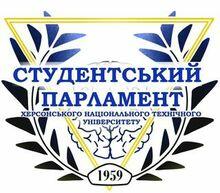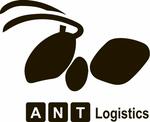|
Network Resources / Electronic library / Періодичні видання ХНТУ / Соціально-економічний розвиток регіонів в контексті міжнародної інтеграції (архів) / Статті іноземними мовами / Chinese experience of the taxation in the context of economic growth |
Chinese experience of the taxation in the context of economic growth
Created 17.06.2013 06:56
A.V. Gurnak
Cand.Econ.Sci., associate professor, doctoral candidate to chair of finance and bank activity
Donetsk national technical university
Annotation. In the article the basic lines of the Chinese model are considered taxations which have a most influence on dosyagennya of economic successes of country.
Keywords: taxation, economy growing, socio-economic development, corporate income-tax, value-added tax.
Relevance of a subject of research and problem statement. Existence and development of any state is impossible without attraction in its order of financial resources. Since ancient times taxes were the main tool by means of which this problem was solved. In too time, withdrawing by the taxation part of the income of citizens and managing subjects, the state not only an opportunity to contain itself, to finance production of the public benefits and various programs of social development has, but also essential impact on economic development has. Nature of such influence is ambiguous. Historical experience shows that in certain cases the taxation becomes unreasonable burden for national economy, slows down its development, in other cases the tax policy is estimated as one of the most important components of economic growth.
In the contemporary economic history development of People's Republic of China (further China) became one of the most striking examples of "economic miracle". As a result of carrying out policy of reforms and openness, for the last 30 years rates of a gain of GNP in China in times exceeded average world, and in 2010 on GNP indicator China ceded only the USA. Thereof studying of the Chinese experience of economic reforming, understanding of a role of a tax policy in achievement of significant economic results has big relevance, especially for those countries including for Ukraine which, also having chosen a way of reforms and creation of market economy, showed more modest results.
Analysis of the last researches and publications. Among the last researches, differing systemacity of approach and including the analysis of tax aspect of the Chinese economic reforms it is possible to note Portyakov's works of [1], D. Kindzha [2], the monograph under L.Brandt and T.Ravski's edition [3]. Directly works [4-5] are devoted to questions of creation of tax system, features of a tax policy.
Research objective. Despite a large number of scientific researches, a question of what features of practice of the taxation in China became key in ensuring high rates of economic development of the country remains open. The objective of this research also consists what to mark out the main lines of the Chinese model of the taxation which in the greatest measure promoted achievement of economic successes.
Result of research. Characterizing practice of the taxation in China, first of all, it should be noted rather low level of the taxation. So, at the beginning of reforms, in 1980 the share of taxes in gross domestic product made 12,58%, in the next five years increased to 22,64% (1985), and then decreased and in 1995 was characterized by one of the lowest values – 9,93%. In the next years this indicator increased: in 2000 its level corresponded to level of 1980, and in 2009 equaled 17,48%.
Social and economic development of China throughout the millennia was defined by morals, valuable norms of Confucianism. It is interesting to note that Confucius's doctrine contains certain provisions concerning the taxation. The philosopher defines ideal tax system, as such which provides withdrawal at subject 10% of their income. The governor never should depart from the specified criterion when forming a tax policy. Thus, low level of the taxation is a component of the Chinese tax mentality, testifies to good management. Having the reasons in Confucianism and Daoism which, on a trope of F.I.Girenka, in China work at molecular level, low level of the taxation led to consequences which locate in a framework of the theory of economy of the offer, that is considerably promoted an exit of economy to a trajectory of sustainable economic development.
In formation of tax revenues of the consolidated budget of the People's Republic of China the value added tax, corporate income tax, a tax on business activity have the greatest value. In aggregate the share of these taxes in structure of tax revenues in 2009 made 65,58%.
Corporate income tax. Since the beginning of economic reforms the key factor of their success considered attraction of foreign investments in considerable volumes. The important part in the solution of this task was assigned to creation of tax incentives within the taxation by corporate income tax. In China there were two various laws one of which defined rules of the taxation of the income of the domestic enterprises, and another – the enterprises with foreign investments and the foreign enterprises. Though the rate of a tax was identical – 33% that included 30% of the state and 3% of a local tax, but thus the foreign enterprises and the enterprises with foreign investments, unlike the domestic enterprises, could use numerous tax preferences. These preferences assumed the tax vacation which duration could be from 3 to 10 years, and for the big projects connected with development of infrastructure, the power could increase this term. Ten-year tax vacation, for example, assumed release from payment of a corporate tax within the first five profitable years, and use reduction of its rate for the next five years. The enterprise had the right to tax vacation provided that it was engaged in production or commercial activity during the minimum stipulated term in 10 or 15 years. Decrease in tax rates to 24% and 15% also was provided for those foreign enterprises and the enterprises with foreign investments which were created in the special regions of China. Besides, local authorities often refused the part of a tax established to them.
In March, 2007 the Law on corporate income tax action which extended both on the domestic enterprises, and on the enterprises with foreign investments was adopted. This law entered action since January 1, 2008. Corporate income tax pays off on the basis of net income after a deduction of reasonable expenses and losses, that is, in fact, it is an enterprise profit tax. The tax is established on an annual basis, but is often paid quarterly with the subsequent return or transferring the next year excessively paid sums.
The standard rate of a tax was lowered to 25% and is applied both to domestic, and to the foreign enterprises. There are branch preferences which the enterprises relating to sector of new and high technologies can use. The lowered rate of a tax at the level of 20% is established for the small and low-profitable enterprises. The tax on the income of the legal entity of the nonresident is established by the Law on corporate income tax also of 20%. The base rate was lowered by regulations regulating Law application to 10% for the passive income of nonresidents (dividends, percent, a royalty, etc.).
It should be noted that reforming of corporate income tax was positively apprehended Chinese by a business community. So, by results of poll of carried-out CPA Australia three months later after the introduction of the Law in force among 162 financiers, accountants and businessmen, 85% of respondents noted that this reform will have positive influence on economy [6].
As for stated before carrying out reform of fears concerning reduction of volume of foreign investments into China, they weren't confirmed. For the first three months 2008 the volume of foreign investments not only wasn't reduced, and, on the contrary, increased by 75% in comparison with the previous prereform year. It is obvious that the tax factor which was of great importance in policy concerning attraction of foreign investments at the beginning of the period of economic reforms, today, when China is on a trajectory of steady growth, conceded the priority to the capacity of the Chinese market, the low expenses, growing to technological level and political stability a little. As a whole according to the contents and the carrying out moment reforming of corporate income tax is a good example of evolutionary management of the Chinese tax system.
Value added tax. The value added tax in China was imposed in 1984 and was limited to only 24 objects of the taxation. In December, 1993 the State Council adopted the Temporary provision on the VAT which codified everything the norms accepted to this moment on regulation of this tax, and existed until the end of 2008. The enterprises, the organizations and the persons realizing goods, the importing goods rendering services in production, repair or technical replacement became payers of the VAT. The majority of services the VAT weren't assessed, and were subject to the taxation other type of indirect tax – a tax on business activity. The main feature of functioning of the VAT for that period was that calculation of the entering VAT didn't join the VAT added on cost of acquired fixed assets. Such practice of collection of the VAT received the name product-type VAT, and its justification was that in the country considerable inflation owing to what the government pursued the aim of control of capital investments was observed. In fact, the used scheme led to the double taxation.
In 2004 in three provinces of North East China (the Provinces of Heilongjiang, Liaoning and Jilin) with the purpose to recover old industrial base practice of collection of the VAT was changed, namely – it was authorized to use a VAT deduction on the acquired fixed assets. Let's notice that this, as a matter of fact, experiment was limited not only geographically to three specified provinces, but also in branch aspect. The right to a VAT deduction on fixed assets was acquired by the enterprises of 8 branches: production of the equipment, petrochemical branch, the metallurgy enterprises, the car and shipbuilding, the enterprise and enterprise hi-tech, connected with processing of agricultural production. Positive experience of pilot reform was expanded in 2007 on 26 industrial cities of the Central China, and in the second half of 2008 some territories of the Inner Mongolia and the victim of an earthquake the district Venchuan of the Province of Sichuan were attached to such practice. And only since January 1, 2009. tax reform was extended to the territory of all country, VAT collection in China began to be carried out in compliance with so-called consumption-type VAT.
Normative documents allocate two categories of taxpayers of the VAT: usual and small. Those enterprises for which the sales volume doesn't exceed the size established by the tax authorities treat category of small payers of the VAT: 1) 500 thousand yuans (originally 1 million) - for the enterprises connected with production of goods and providing services stated above; 2) 800 thousand yuans (originally 1,8 million yuans) – for the enterprises of wholesale and retail trade. In fact, for this category of taxpayers of the VAT functions as a tax on a turn as the established rate of a tax, for 2012 is 3%, it is applied to the size of volume of realization, and deductions of the paid VAT aren't resolved. Such approach simplifies tax administration, but, there can be less favorable, than a taxation in the status of the ordinary taxpayer. Ordinary payers of the VAT are all what aren't defined as small. In this case the scheme of application of the VAT corresponds to universal practice. These payers keep the separate accounting of the proceeding and entering VAT for the corresponding period, and their difference is paid to the budget. The size of the proceeding VAT is defined by a way of multiplication of volume of realization for the tax period on a tax rate which can make 0%, 13% and, generally, 17%. China realizes the multilevel (differentiated) system of compensation of the VAT when exporting goods. Compensation isn't allowed when exporting goods which don't stimulate further export, such, for example, as the rare-earth metals, which stocks in China are the greatest in the world.
Tax on business activity. The tax on business activity is paid from a turn by all enterprises and the businessmen which activity is connected with rendering practically all types of service. The tax bag which is subject to payment, is defined by turn work on a tax rate. The rate of a tax varies in the range from 3% to 20% depending on a type of rendered services.
Simultaneous use of a tax on a turn and the VAT leads to the double taxation in case services are got by ordinary payers of the VAT, and also at acquisition by suppliers of the specified services of various goods for production requirements. Long time discussion about replacement of this tax on a turn was carried out by a value added tax. The main difficulties of such reform are connected with that: 1) the most part of the VAT (75%) goes to the central budget and 25% in the local budget, and the enterprise tax is a source of formation of the income of local budgets. Therefore, there is a problem of coordination of interests of budgets of various levels; 2) it is rather difficult to use the VAT in some branches of a services sector, for example, in the banking sector as it is difficult to define base for calculation of this tax.
For a final decision of this question since January 1, 2012 in Shanghai started the pilot project which assumes replacement of an enterprise tax with a value added tax for this administrative unit. The beginning of such program is sign concerning change of an assessment of a role of a services sector in economic development of China. According to the Minister of Finance of the People's Republic of China: "The modern services sector became the main instrument of ensuring economic stability of the state" [7]. The choice of Shanghai for carrying out such tax experiment is connected with that rather complete series of various branches and economy sectors, including from a services sector there is presented. If the pilot program is successful, it is possible to expect that reform will be carried out within all tax system.
Conclusions and prospects of further researches. The carried-out analysis shows that tax reforms carried out in China, really promoted achievement of high rates of economic development of this state. Thus, it is possible to consider as the key moments, first, rather low level of the taxation. Certainly, a significant amount of social problems wasn't solved due to the lack of financial resources. Despite considerable economic successes, China didn't construct the state of general economic welfare, however, opportunities and probability of search of effective decisions in the social sphere now much above, than if such tasks were set earlier. Secondly, practice of the taxation, often was discrimination, creating incentives for attraction of foreign investments and foreign experts, keeping development of new technologies. It contradicts recommendations of the neoclassical theory about formation of the neutral taxation. Thus, becomes obvious that if the state seeks to reach high rates of economic growth, it is possible, only if the priority is allocated for regulating function of taxes. At the same time, in what measure the Chinese experience of the taxation in the conditions of reforming of economy can be applied in other countries including to Ukraine, remains a subject of further researches.
BIBLIOGRAPHY:
1 . Portyakov V. Y. Economic reforms in China (1979-1999) / V.Y.Portyakov. - M: Institute of the Far East of the Russian Academy of Sciences, 2002. - 178 pages.
2 . Kindzh, China which was shaken by world/James Kindzh. - М: ACT: ST MOSCOW, 2008. - 351 pages.
3 . China's Great Economic Transformation/Edited by L. Brandt, T. Rawski. – Cambridge University Press, 2008. – 906 p.
4 . The China Tax Guide/Edited by Devonshire-Ellis C. Woollard S. Scott A. - Springer-Verlag Berlin Heidelberg, 2011. – 60 p.
5 . Shevel I. Reforming of personal income tax in China / I.Shevel//Problems of the Far East. – 2006 . - No. 6. – Page 51-59.
6 . Businesses positive about corporate tax law//China Daily, 2008, Apr. 11 . - Access mode: http://www.china.org.cn/business/news/2008-04/11/content_14915503.htm.
7 . Reform of VAT system may be extended//China Daily, 2012, Feb. 24 . - Access mode: http://www.china.org.cn/business/news/2012-02/24/content_24720063.htm.

















